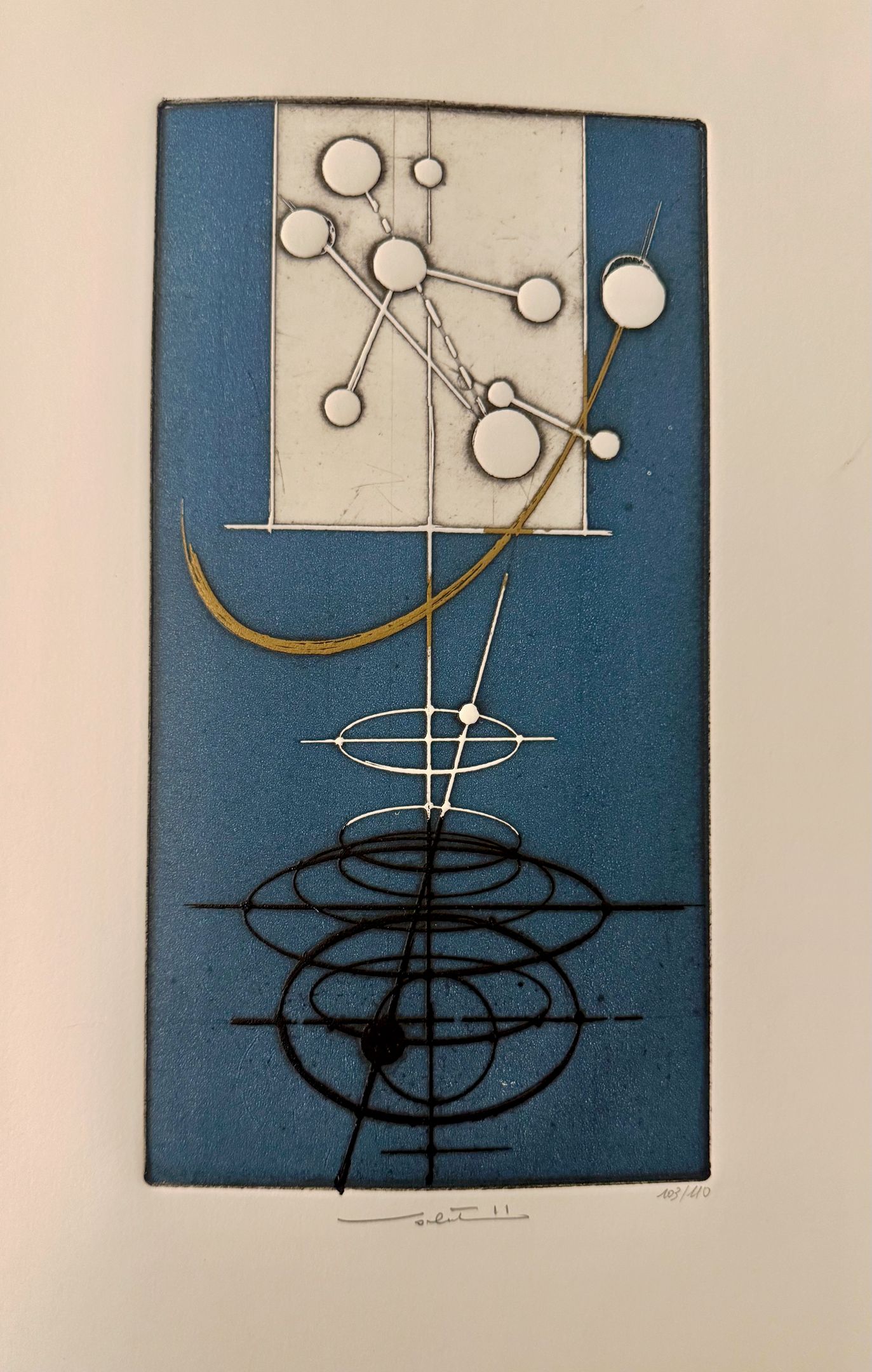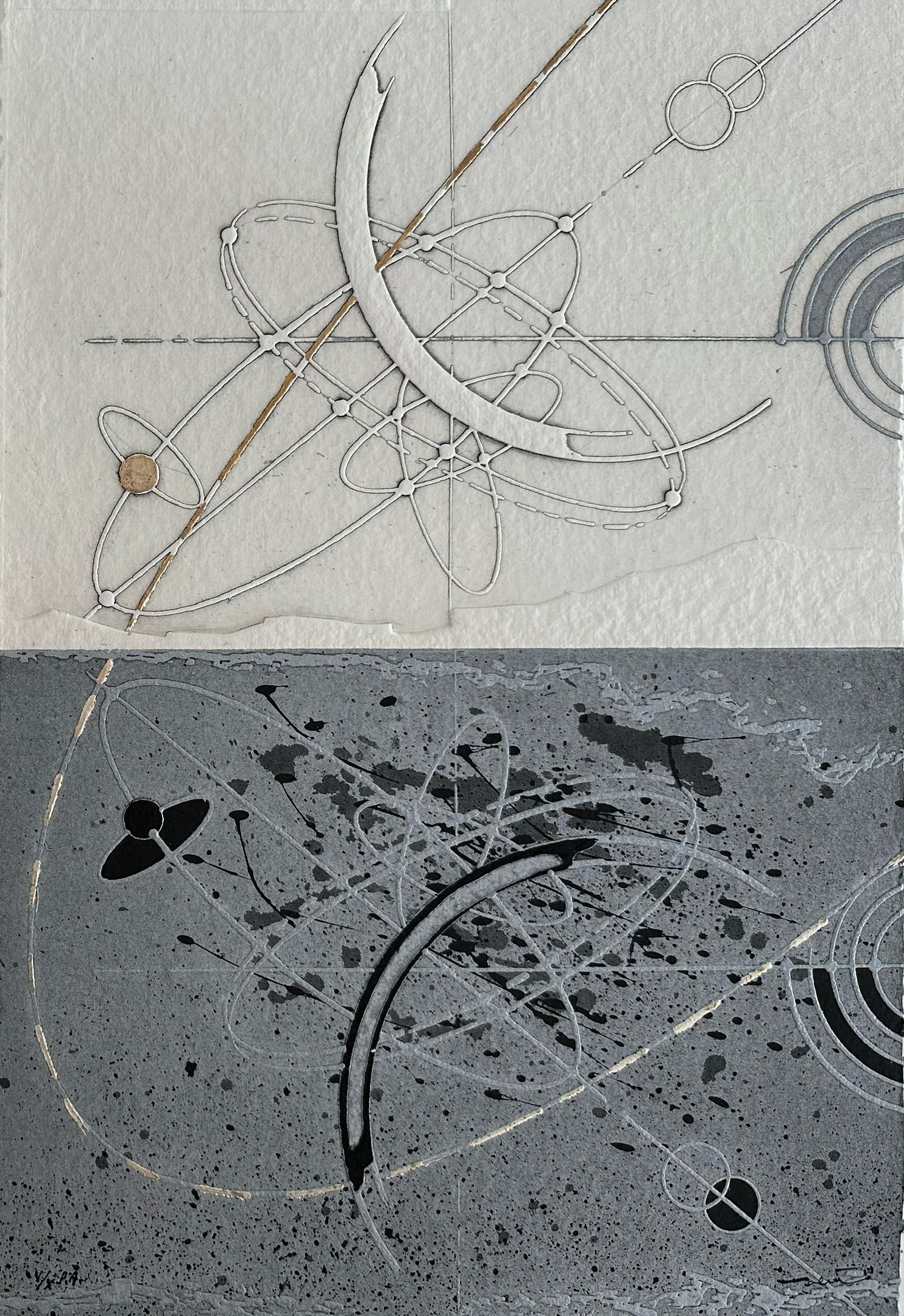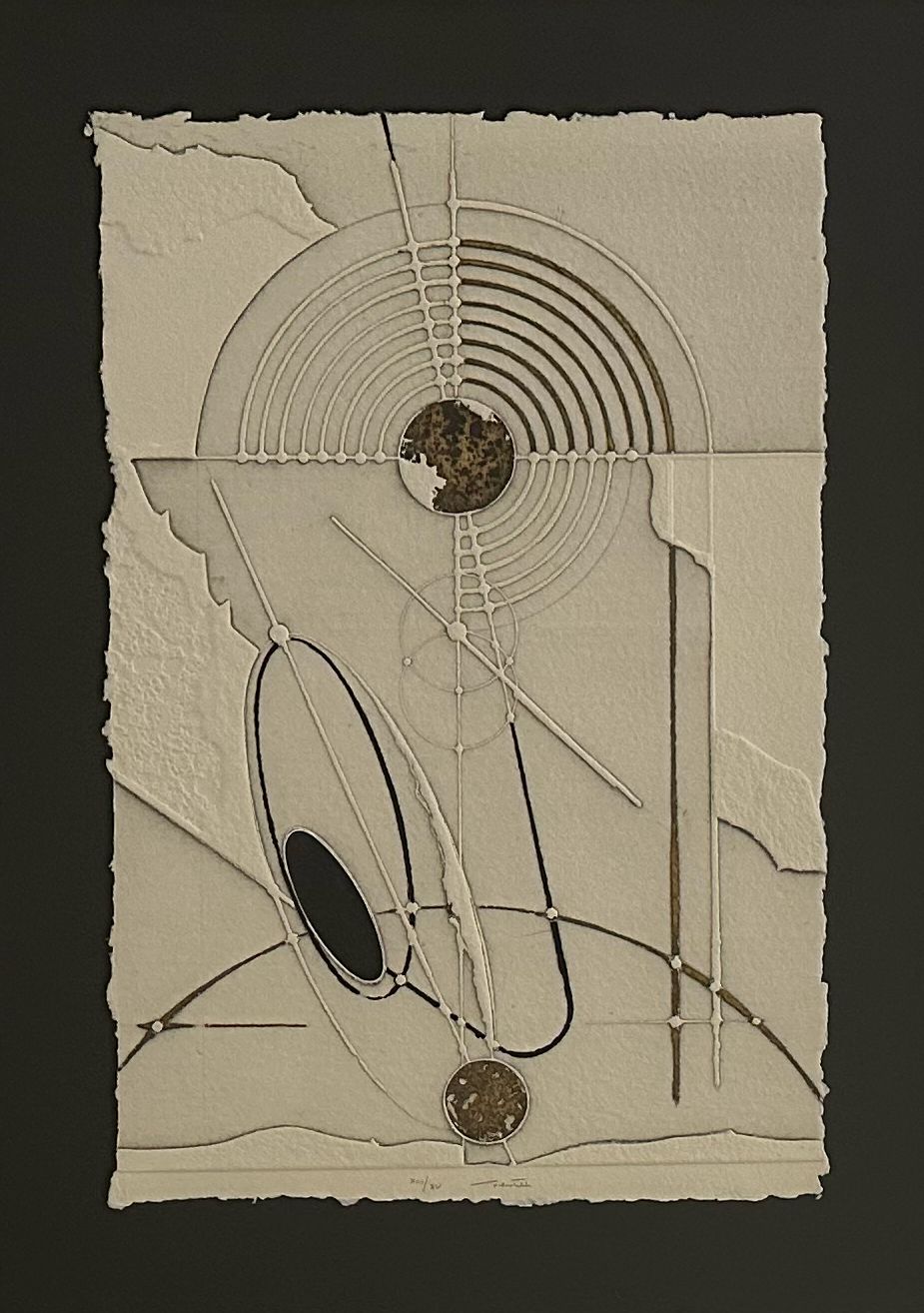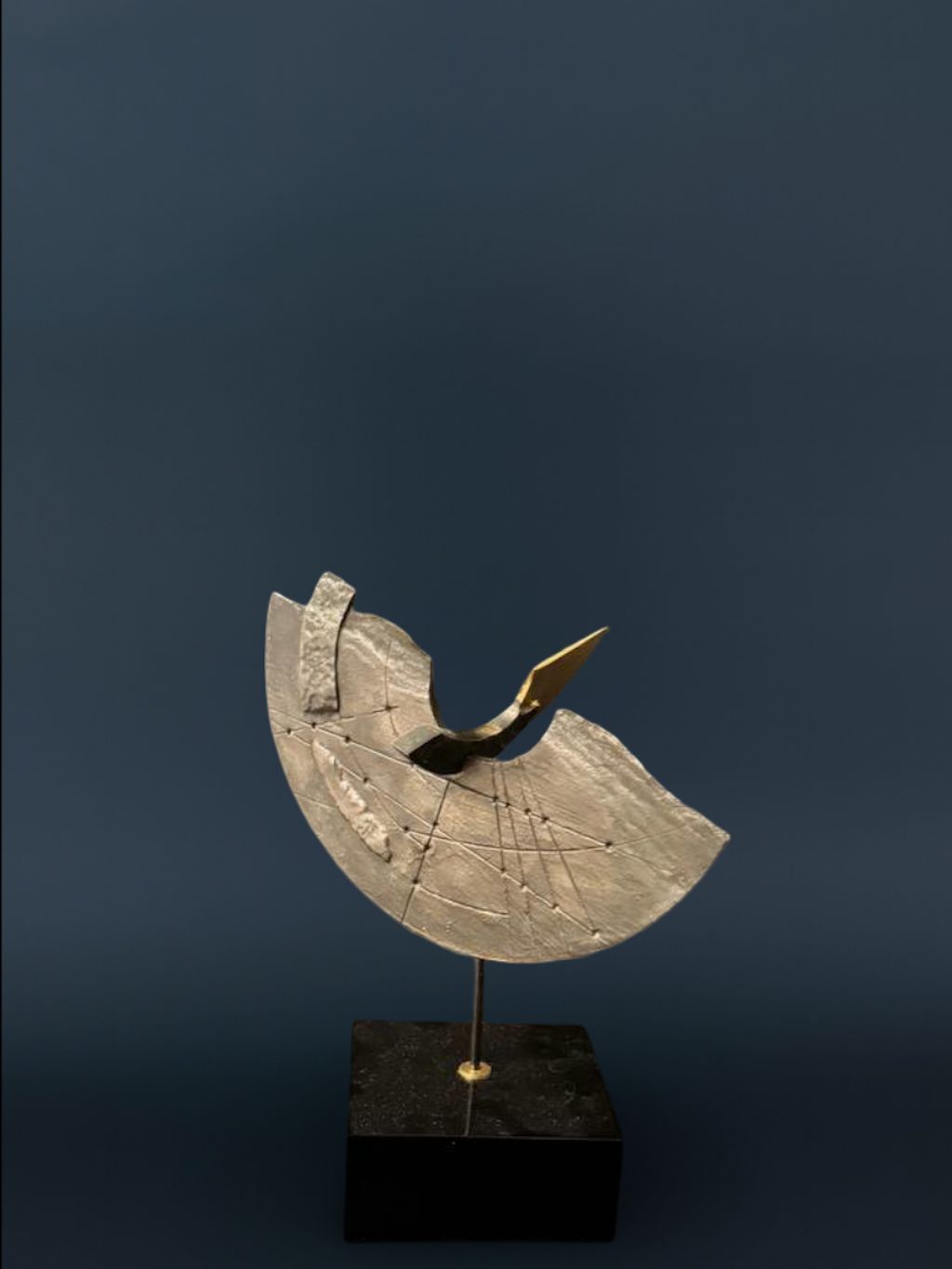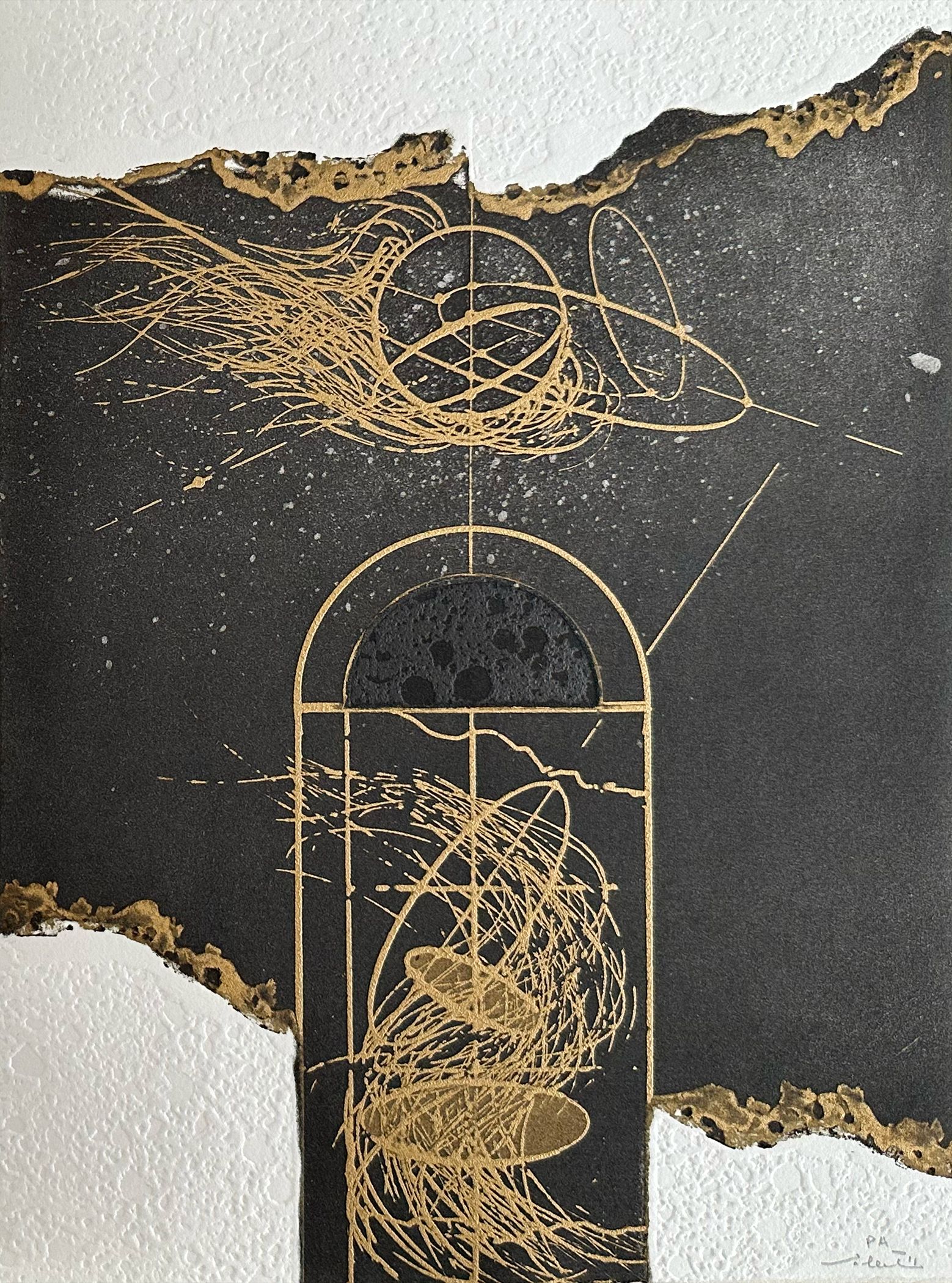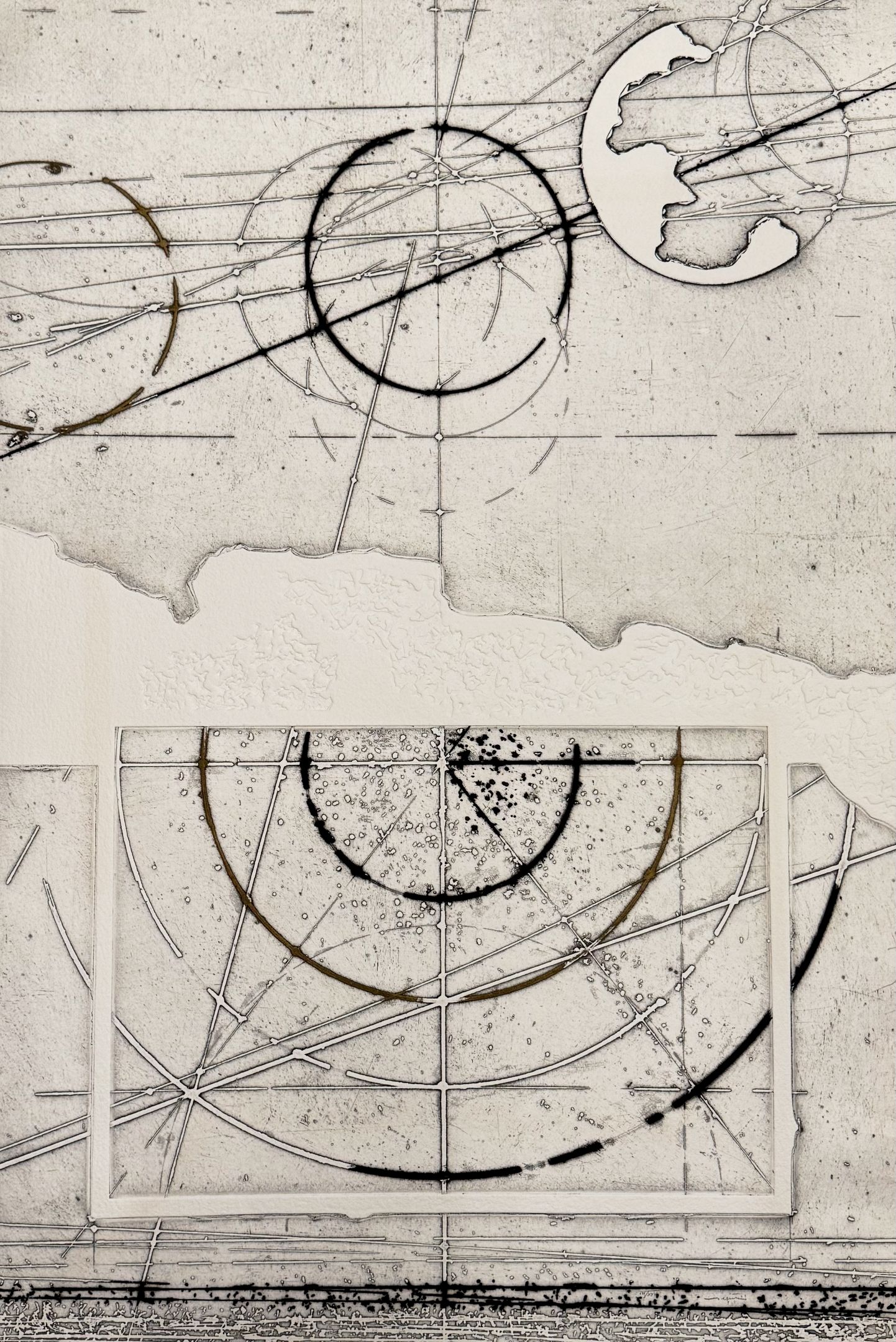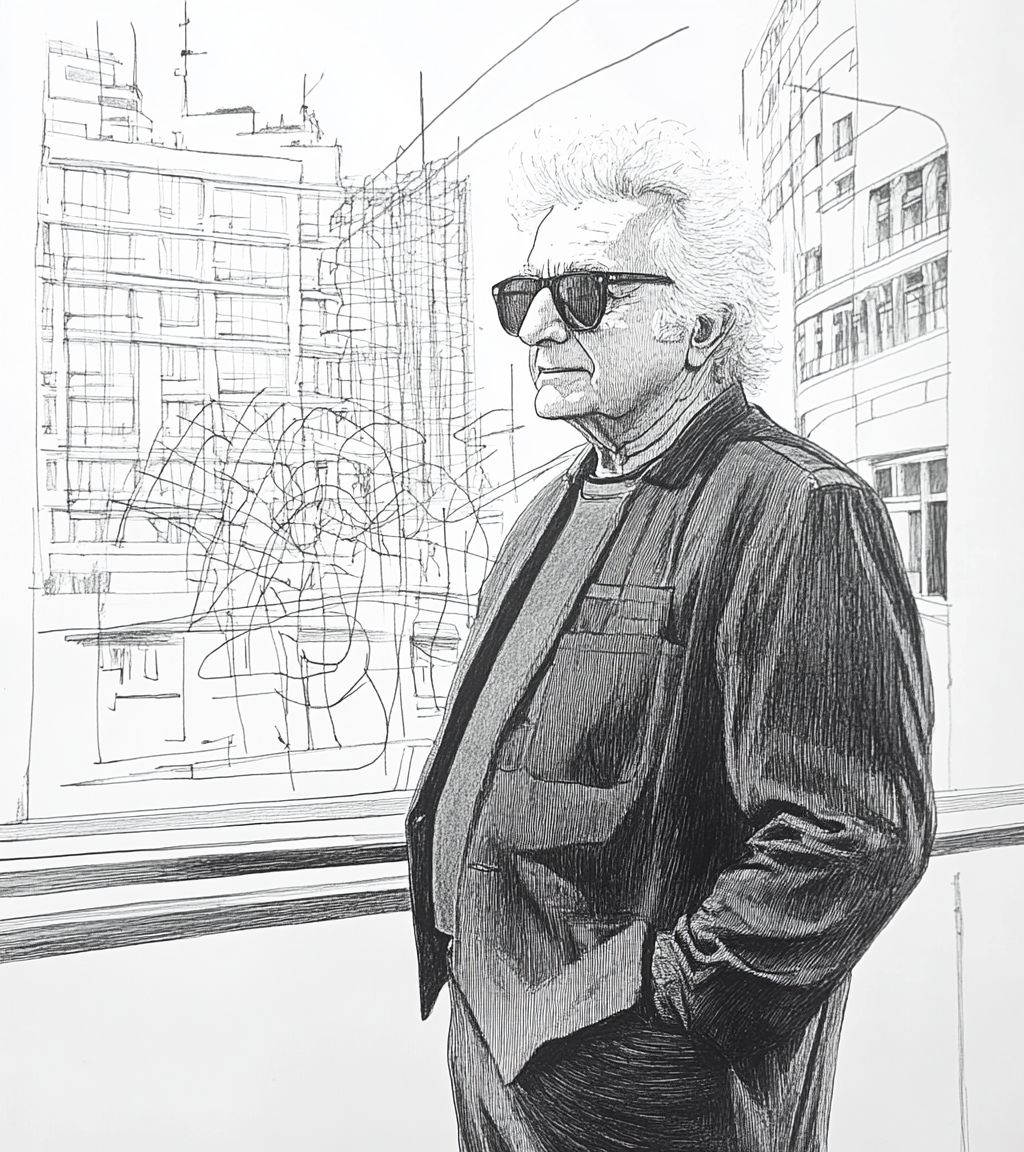
Walter Valentini
Walter Valentini studied engraving and graphic arts at the Institute of Fine Arts in Urbino and the Scuola del Libro. Deeply influenced by Renaissance art and mathematical precision, Valentini was also inspired by modern movements such as constructivism and metaphysical painting. By the 1950s, he returned to Milan and began working professionally in both graphic design and fine art, collaborating with notable modernists and gradually developing his own distinct visual language.
Valentini’s work is known for its geometric abstraction, characterized by architectural structures, circular forms, lines, and symbolic motifs. He explored metaphysical ideas such as time, space, and order through rigorous compositions that evoke celestial mechanics, Renaissance perspective, and cosmological harmony. His use of white surfaces contrasted with gold, black, or deep blue created a sense of depth and transcendence. Valentini often referred to his paintings and engravings as “architectures of time,” blending exactitude with poetry.
Some of his most notable works include the series Le Stanze del Tempo (“Rooms of Time”), Le misure, il cielo (“The Measures, the Sky”), and Città del Sole (“City of the Sun”). Valentini exhibited widely in Italy and abroad from the 1970s onward, with major retrospectives at CAMeC (La Spezia, 2013), Museo della Permanente (Milan), and international biennales. His works are now housed in major institutions, including MoMA (New York), Museo della Grafica (Pisa).
Collected by major institutions and notable private collectors:
— The Museum of Modern Art— MART Rovereto
— GNAM Rome
Notable sales and auction records:
— Untitled, EUR 22,5 thousand at Studio d'Arte Borromeo, 2021— Archetipo 76, EUR 8 thousand at Mediartrade Casa d'aste, 2023
— Trip X, EUR 8 thousand at Meeting Art, Vercelli, 2007
Artworks and Paintings
Biography and Artistic Career Highlights
Walter Valentini was born on October 11, 1928, in Mociano, near Urbino, Italy. The atmosphere of the small Italian town, surrounded by Renaissance architecture, deeply influenced the formation of his artistic worldview. Already in his youth, Valentini showed an interest in drawing and graphic art, as well as in the exact sciences, which later became reflected in his creative method.
1947 — entered the Academy of Fine Arts in Urbino, where he studied engraving, graphics, and architectural foundations. Here he mastered the classical techniques of etching and lithography, laying the foundation for his future style.
1950s — actively worked in the field of graphic art and book illustration, while also showing interest in architecture and geometry. His first etchings and drawings demonstrated a pursuit of harmony between art and science.
1960s — participation in graphic art exhibitions in Italy and abroad, and acquaintance with avant-garde movements. Valentini gradually developed his own language, based on the combination of abstraction and strict geometric structures.
1970s — established himself as a master of contemporary art: he created cycles of engravings and drawings exploring space, time, and the symbolism of numbers. His works acquired mathematical precision and philosophical depth.
1980s — international recognition: solo exhibitions in Europe and the United States. Valentini developed the series “Architectures,” combining painting, graphics, and relief. Motifs of the cosmos, planetary orbits, and astronomy increasingly appeared in his works.
1986 — received the prize for graphic art at the Venice Biennale, which solidified his status as a major figure in contemporary graphic art.
1990s — continued to explore the theme of the architecture of the universe. His works were exhibited in major museums and galleries around the world, including in New York, Paris, Berlin, and Tokyo.
2000s — created large cycles of etchings and sculptural objects, in which he addressed the concepts of infinity and the interaction between humanity and the cosmos.
2010s — remained an active participant in the art world, holding solo exhibitions in Italy, France, and Germany. His works were increasingly regarded as “visual philosophy,” uniting art, mathematics, and astronomy.
On May 20, 2022, Walter Valentini passed away in Milan at the age of 93. His art became a symbol of Italian contemporary art of the second half of the 20th and the beginning of the 21st century: he succeeded in transforming strict geometry and scientific categories into a poetic language expressing humanity’s quest to understand the harmony of the universe.

